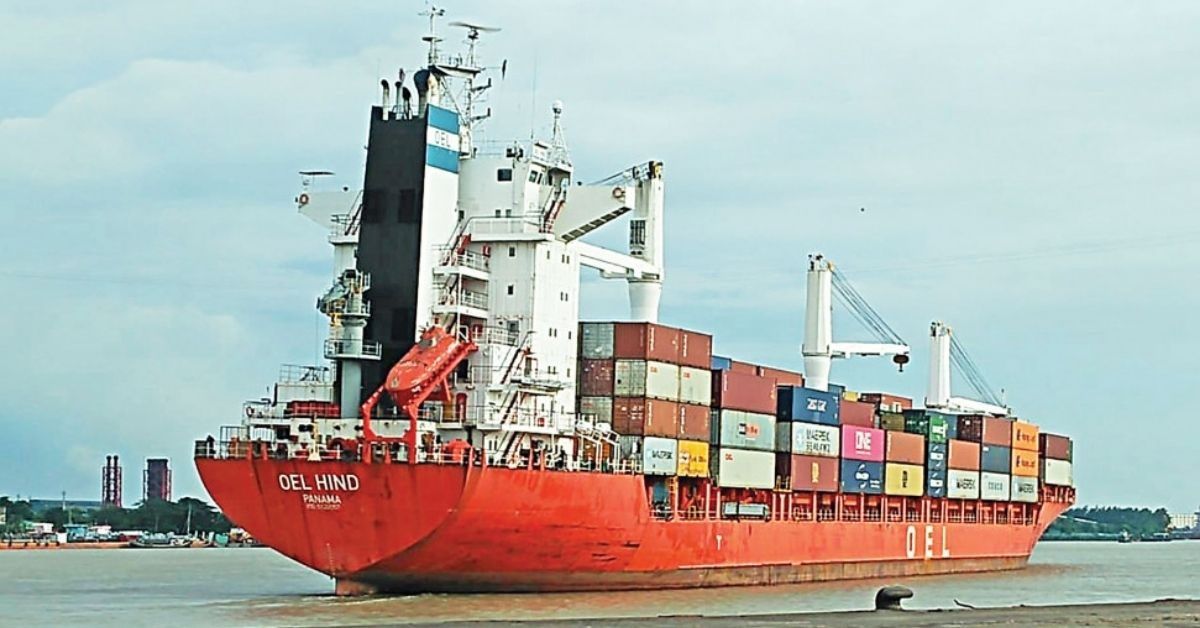Liners will idle as much as 1.5m teu of tonnage next year as the container market eases with analysts warning images of boxships in lay-up could become commonplace once again.
British consultants Drewry are forecasting idling will reach approximately 1.5m teu next year, or roughly 6% of the end-2022 cellular fleet.
“Carriers are going to have to engage every capacity lever they can to stop the rot,” Simon Heaney, senior manager of container research for Drewry, told Splash.
Oslo-based freight rate platform Xeneta, meanwhile, is predicting idling of up to 1m teu.
“Carriers will apply the tools in toolbox available to them to dent the potentially freight rate eroding impact of a massive oversupply,” said Peter Sand, Xeneta’s head of research.
The latest count from Alphaliner shows that there are already 1.24m teu of inactive vessel capacity, referring to ships that are out of revenue service. This equates to around 5% of the fleet. Some 60% of this is due to drydocking, repairs and conversions.
“The amount of commercially idle tonnage is increasing slowly but steadily. Most of these ships are carrier controlled. They are in between services or dropping out of service for one round trip, as sailings were voided,” commented Jan Tiedemann, a shipping analyst at Alphaliner.
Given the huge influx of newbuildings – 2.5m teu in 2023 and 2.9m teu in 2024 – Alphaliner expects commercial vessel idling to grow next year.
Experts at Danish consultancy Sea-Intelligence have mapped out two possible scenarios for how liner shipping grapples with overcapacity in the year ahead.
The more optimistic scenario from a carrier viewpoint would see the volume slowdown levelling out over the coming months, and carriers managing to catch up with capacity removal, to the point where spot rates level out at approximately 2019 levels. To get there, blank sailings would not be enough, wholesale service closures would be required, which the industry is starting to see. In this more optimistic scenario, Sea-Intelligence would expect hot lay-ups and an idle ratio of 3% to 5%, which is high compared to the past few years.
The second scenario envisages volumes continuing to contract over the coming year, and/or carriers refraining from taking the necessary hard cuts to capacity, which are needed to stem the spot rate drops, and, as it has happened several times in the past, the market overshoots the drop. In this scenario, transpacific west coast spot rates would duck below $1,000 per feu, and Asia-Europe rates tumble below $500 per teu, and soon the malaise would spread to all other deepsea trades, effectively a repeat of 2016, but this time round carriers have full war chests to fight out a protracted rate war with Alan Murphy, Sea-Intelligence’s CEO, telling Splash that shippers will watch “gleefully” as carriers set their money piles on fire. In this scenario, after about six months of spot rates being below cost, carriers will have wasted all of their free cash, and will start to panic lay-up vessels, both hot and cold with around 10% of the fleet laid up, and as in 2010.
Niels Rasmussen, BIMCO’s chief shipping analyst, said that with supply set to significantly outpace demand in 2023 and a worsening global economic outlook, cold lay-ups will likely reemerge, a phenomenon last widely seen in the wake of the global financial crisis where many boxships went into hibernation.
Sea-Intelligence advises that older and smaller vessels will be the most likely candidates for cold lay-up.
Lars Jensen, who heads up liner consultancy Vespucci Maritime, said the industry would only begin to see cold lay-ups in a situation where carriers expect a deep global recession lasting all of 2023 and a rebound in 2024, something that is too hard to call at present.
Carrier claims that the upcoming Carbon Intensity Indicator (CII) will take 10-15% of effective capacity out of the fleet have been dismissed by Alphaliner’s Tiedemann.
“The CII effect will be negligible in 2023,” Tiedemann said of the upcoming International Maritime Organization legislation. “Since the index is becoming stricter over time, it will be felt at some point down the road, but probably not in 2023,” he added.
Xeneta is forecasting ocean freight volumes to drop by around 2.5% next year.
“We could see spot rates on some key corridors drop below pre-pandemic levels during the first half of 2023, while long-term rates will fall rapidly as older, expensive contracts expire and new, far lower contracts are signed,” commented Xeneta CEO Patrik Berglund.







